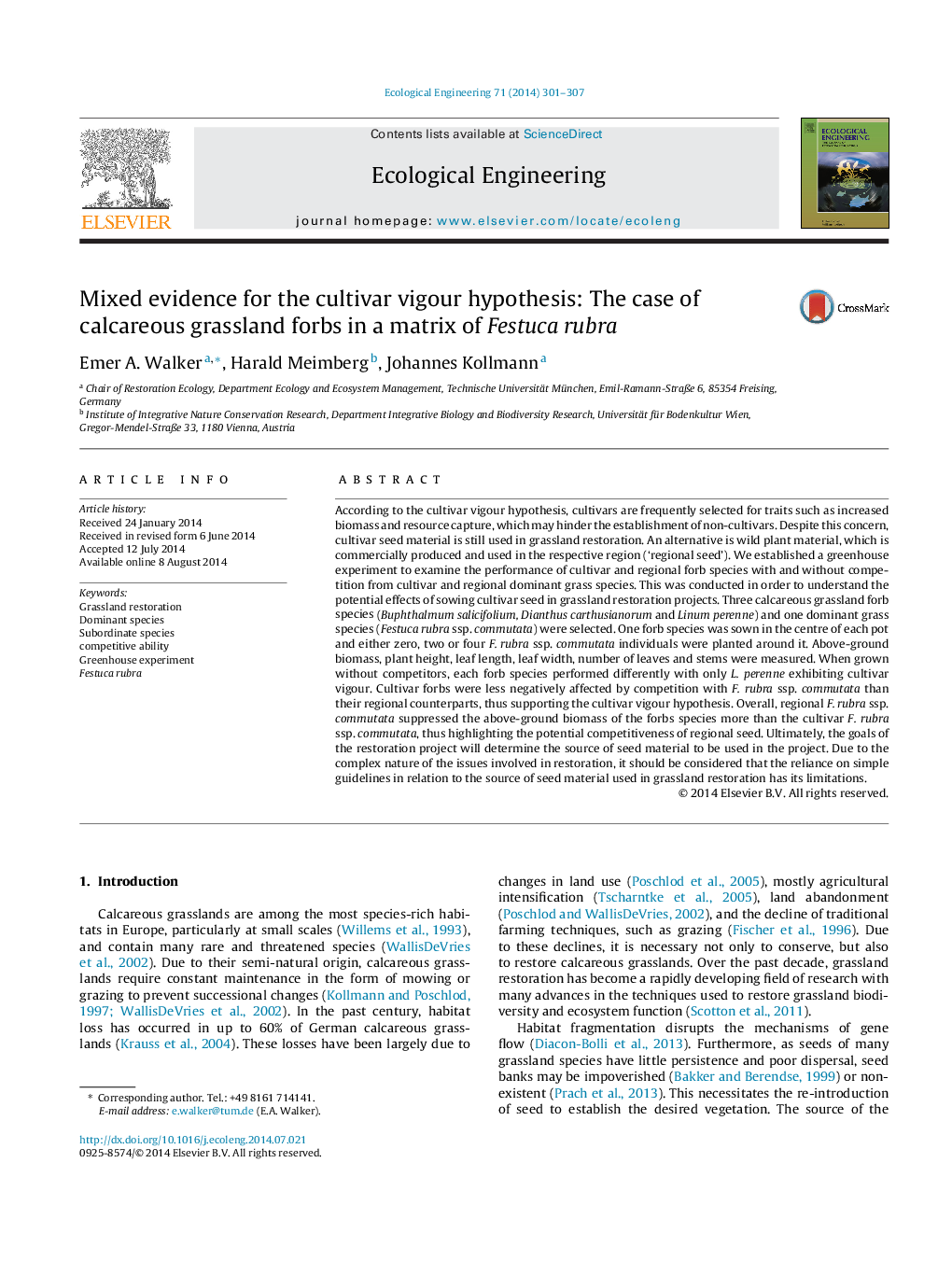| Article ID | Journal | Published Year | Pages | File Type |
|---|---|---|---|---|
| 4389165 | Ecological Engineering | 2014 | 7 Pages |
•Only one of the three forb species showed signs of enhanced cultivar vigour when grown without competition.•In the presence of competition, the cultivar forbs consistently produced more above-ground biomass than the regionally-sourced forbs.•Regionally-sourced Festuca rubra produced more above-ground biomass than cultivar Festuca rubra.•Regional F. rubra suppressed the above-ground biomass of the forbs species more than the cultivar F. rubra.•Due to the complexity of grassland restoration, reliance on simple guidelines in relation to the seed source may have limitations.
According to the cultivar vigour hypothesis, cultivars are frequently selected for traits such as increased biomass and resource capture, which may hinder the establishment of non-cultivars. Despite this concern, cultivar seed material is still used in grassland restoration. An alternative is wild plant material, which is commercially produced and used in the respective region (‘regional seed’). We established a greenhouse experiment to examine the performance of cultivar and regional forb species with and without competition from cultivar and regional dominant grass species. This was conducted in order to understand the potential effects of sowing cultivar seed in grassland restoration projects. Three calcareous grassland forb species (Buphthalmum salicifolium, Dianthus carthusianorum and Linum perenne) and one dominant grass species (Festuca rubra ssp. commutata) were selected. One forb species was sown in the centre of each pot and either zero, two or four F. rubra ssp. commutata individuals were planted around it. Above-ground biomass, plant height, leaf length, leaf width, number of leaves and stems were measured. When grown without competitors, each forb species performed differently with only L. perenne exhibiting cultivar vigour. Cultivar forbs were less negatively affected by competition with F. rubra ssp. commutata than their regional counterparts, thus supporting the cultivar vigour hypothesis. Overall, regional F. rubra ssp. commutata suppressed the above-ground biomass of the forbs species more than the cultivar F. rubra ssp. commutata, thus highlighting the potential competitiveness of regional seed. Ultimately, the goals of the restoration project will determine the source of seed material to be used in the project. Due to the complex nature of the issues involved in restoration, it should be considered that the reliance on simple guidelines in relation to the source of seed material used in grassland restoration has its limitations.
